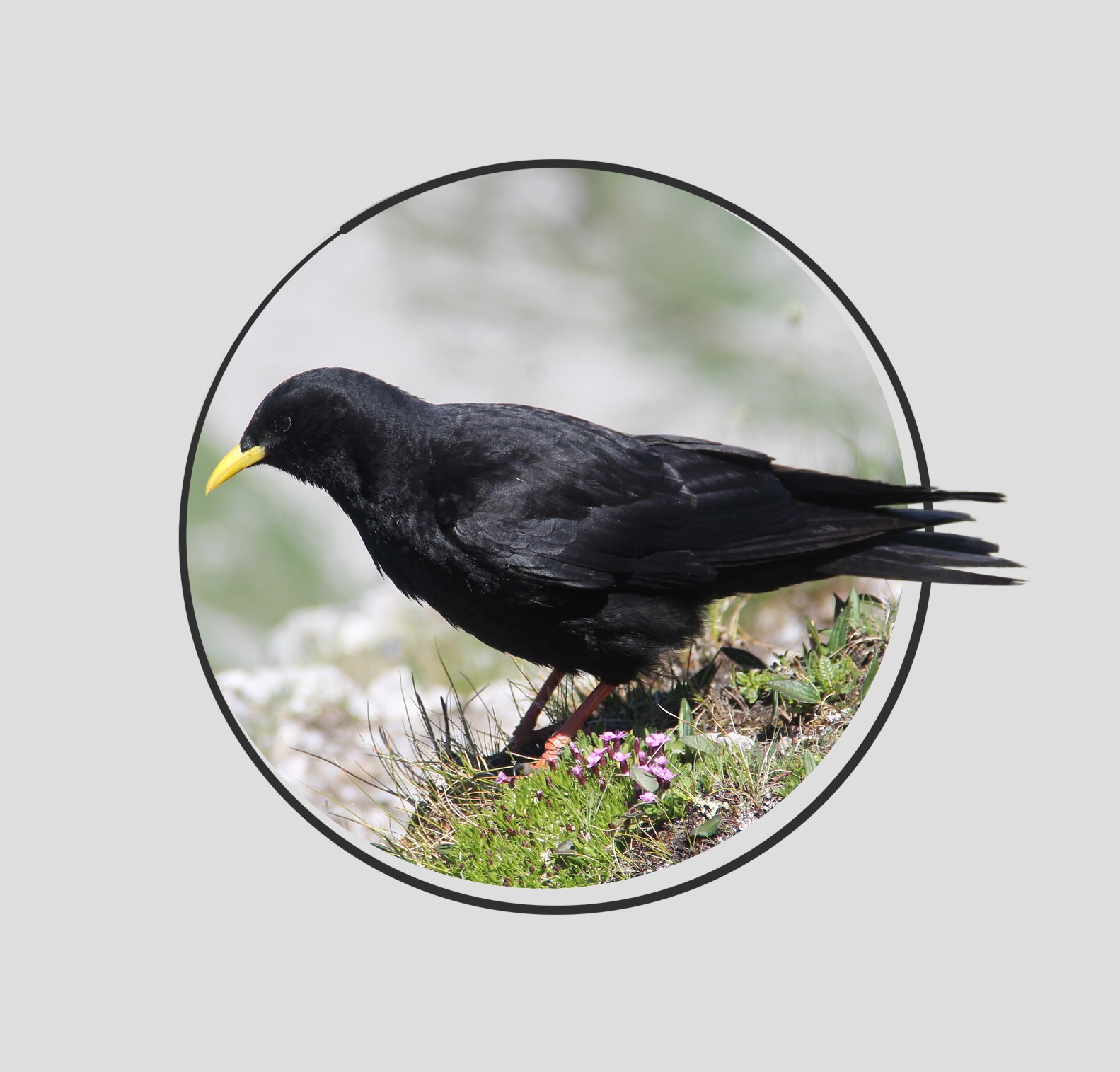JACKDAW (Corvus monedula) Choucas des tours
Summary
A fairly common bird of forest edge, agricultural areas, towns and villages. The smallest of the European Crows, compact, active, with a blue eye and grey behind the head. The call is a sharp, rather high-pitched explosive “kiew”
© Arlette Berlie
Jackdaws are found throughout the lowlands of Switzerland, normally below 800m. Hence it is most often seen across the plateau that runs across the north of the country, but they can penetrate the alpine valleys in some places, and the distribution also follows the valleys of the Rhine and Rhone rivers at lower elevations.
It is not difficult to identify and, being the smallest of the crow family in Europe, can be separated easily by size from other crows. It is more compact than the Carrion Crow or Rook, and its small size means it moves faster and seems more active. Its black plumage is broken by grey on the back of the head and neck, it has a relatively small beak, and if you get a good view, a startling blue eye.
It has a very sharp call with most energy around 1.5 - 1.7 kHz, but produces harmonics up to 10kHz, so this gives the impression it is high-pitched for a crow. Each notes starts very abruptly, almost as if the bird had been holding it breath and suddenly spat out a squeal!
Jackdaw basic calls
These birds are colonial, and several (often many) pairs will nest in close proximity. Sometimes they will build open nest of sticks in dense tree tops, however these nests tend to be more subject to predation (Coombs 1978). So they usually prefer hole nesting, and natural sites may be a crevice in a tall tree or a cliff. However, this habit has also led to them nesting frequently in tall old buildings, such as church towers, old castles and farms - hence their name in French. Living together like this means lots of individual interactions both behaviourally and vocally. In the previous recording you can hear much shorter “jup” calls which is the type of call they use when defending their territory, which is simply the area immediately surrounding the nest. They also use it when communicating with a mate. This results in an almost continuous cacophony of calls around the colony:
© Arlette Berlie
Isolating particular types of calls in this mixture is difficult and a variety of authors describe Jackdaw calls in different ways which can be very hard to understand (Cramp etal 1994). Here are two birds calling together, one with a higher call than the other and it is tempting to speculate that it is male and female (they probably mate for life) but I have no evidence to back up this guess!
The following piece is of a flock of Jackdaws feeding on the seashore as the tide receded, they were suddenly invaded by a group of Black-headed Gulls. The gulls have the coarser raucous calls at the beginning, then around 11 secs you can hear sharp “kiaow!”calls from the Jackdaws, clearly annoyed by these competitors, and at 18 secs they all rose together mobbing the gulls and driving them off using the same call as a group, this is clearly a call to signal aggression:
© Arlette Berlie






